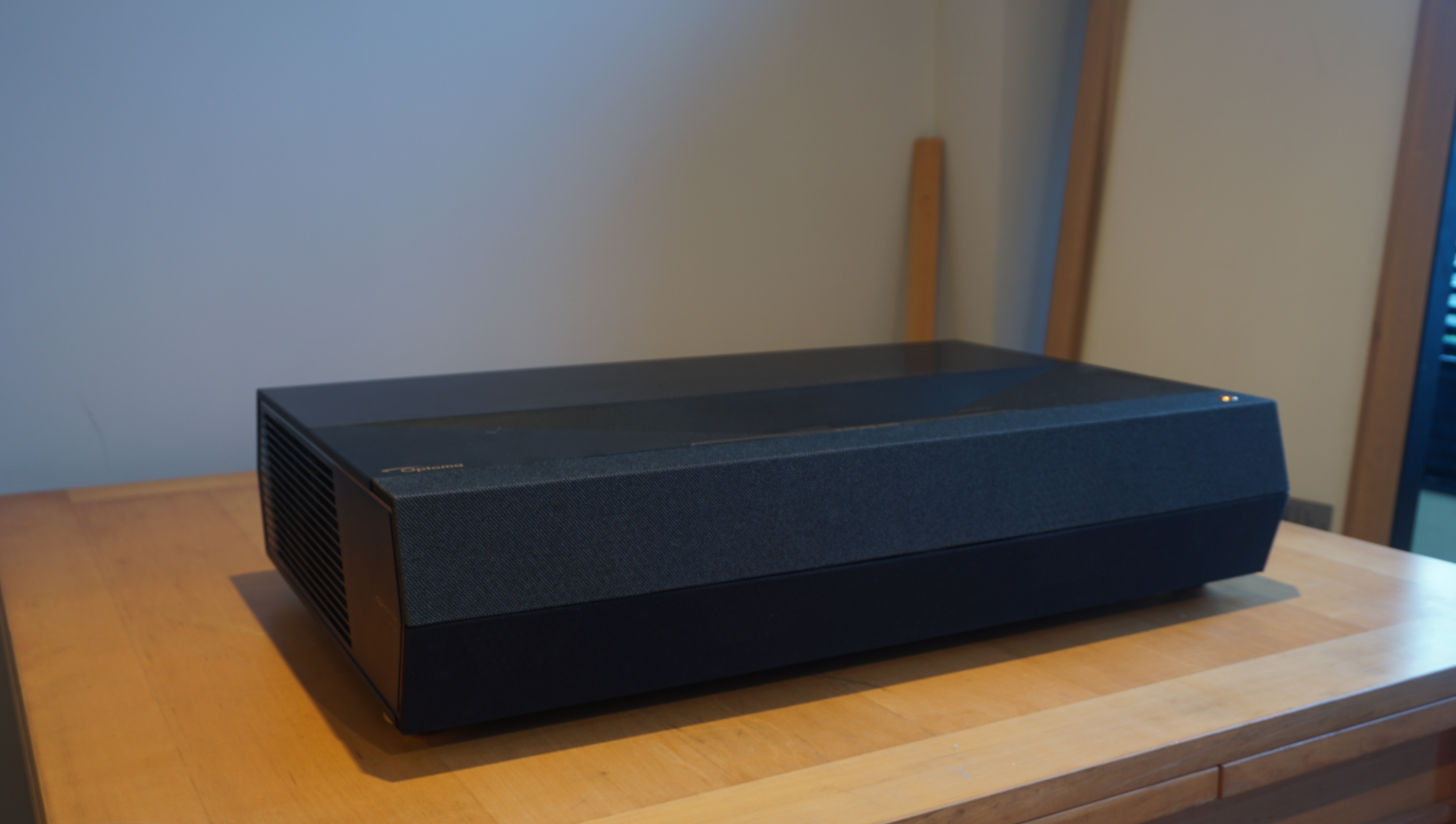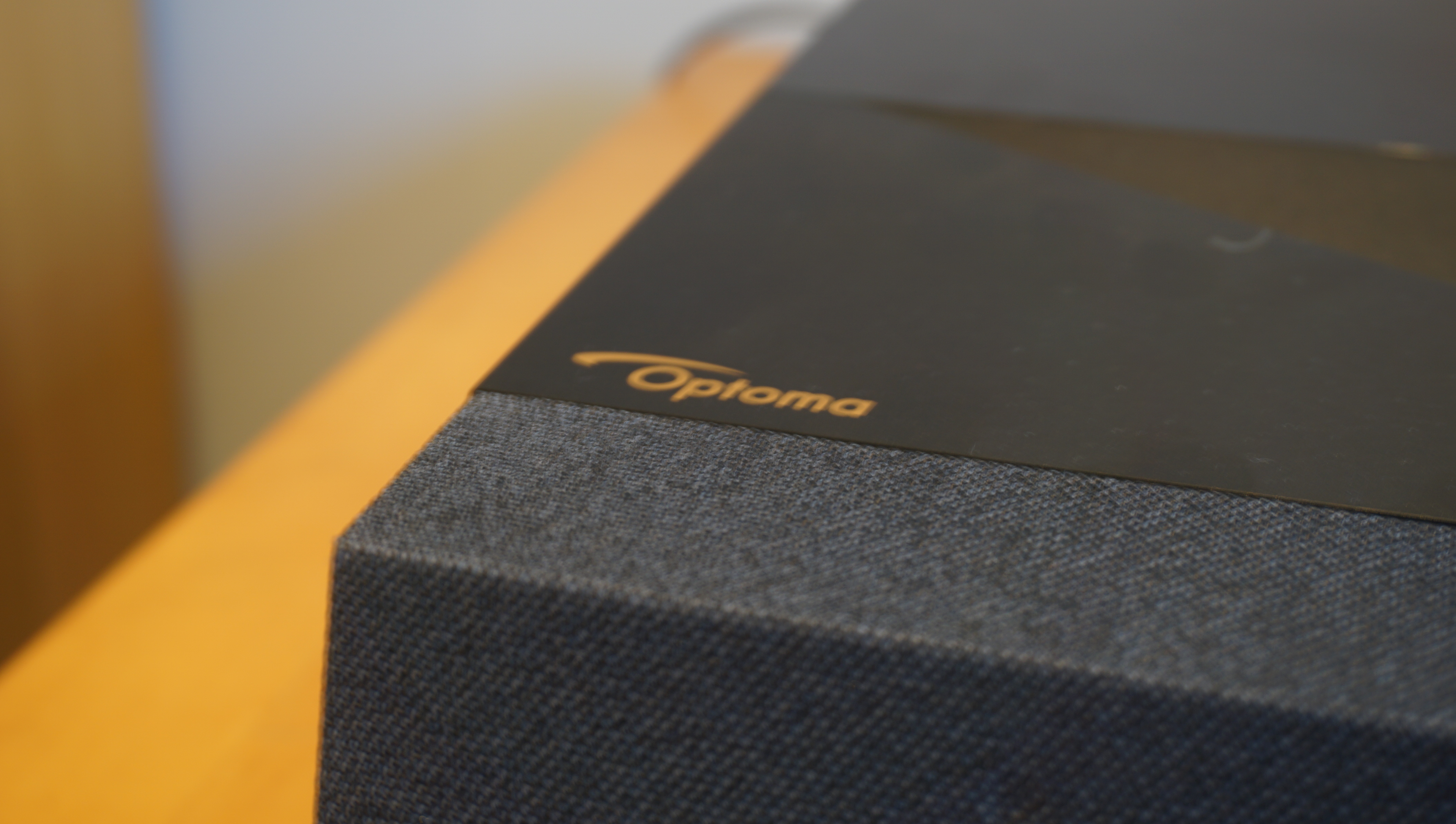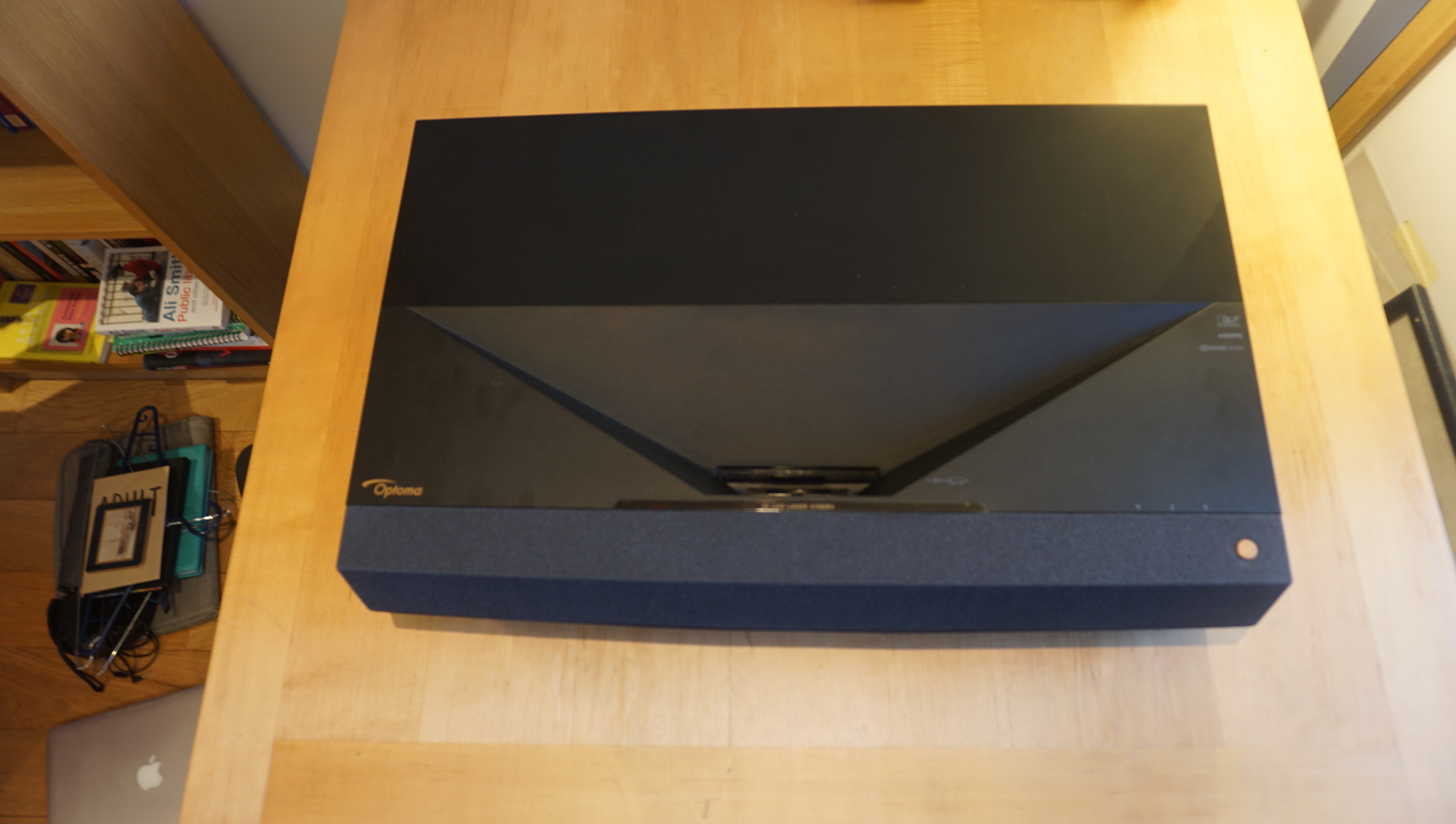TechRadar Verdict
The Optoma UHZ65UST is a premium piece of hardware, but its flashy looks and premium sound distract from the sore lack of upscaling ability or high-resolution streaming.
Pros
- +
Massive, bright projection
- +
4K/HDR
- +
Built-in soundbar
Cons
- -
Basic smart platform
- -
Only low-res streaming
- -
Upscaling could be better
Why you can trust TechRadar
What to make of the Optoma UHZ65UST? This 4K HDR projector certainly has some swagger, with a sharply angular design, powerful built-in speakers, and picture specifications that, on paper, can rival any television.
Optoma calls this model its “TV killer”, although whether you’d choose a projector over a television is often more dictated by your living arrangements – whether you have the space for a large television, for instance, or need a device that you can move between rooms without too much hassle – than a head-to-head quality comparison between the two technologies.
Generally, you’ll get more bang for your buck with one of the best TVs out there, but if a higher-end projector is the AV solution you’re after, the Optoma UHZ65UST is the sort of thing you might be looking at. It’s an UST (ultra short-throw) model, so you’ll be able to shimmy it right up to the wall, rather than beaming the picture from the other side of the room.
We put the UHZ65UST to the test to see how it fared, and found a projector with some excellent specs – and some equally noteworthy flaws.

Price and availability
The Optoma UHZ65UST isn’t cheap: at £3,299 it’s certainly towards the upper end of the price range for home cinema projectors. It’s available for purchase in the UK and across Europe direct from Optoma, Peter Tyson, or in-store at Richer Sounds.
The equivalent model in the US retails for $3,799 and is called the Optoma Cinemax P1, which has a slightly lower contrast ratio and 3,000 lumens brightness (available at Amazon).
In Australia, it's simply called the Optoma P1 and is available for AU$7,999.
Sign up for breaking news, reviews, opinion, top tech deals, and more.

Design and features
The Optoma UHZ65UST is certainly eye-catching, even when the projector is throwing pictures onto a wall or screen. Its sharp, angular design gives it a powerful and futuristic appearance, a bit like the polygonal Tesla Cybertruck – but with slightly more detail filled in.
The body of the projector is black, with a two-tone gray mesh over the front-facing speakers, and gold detailing (no, not actual gold) for the Optoma logo and power button. The centerpiece is (of course) the laser projector lens itself, which faces over the body. This is an ultra short-throw projector that looks very premium, because it is.

At the back of the projector you’ll find an ethernet connection (you can also connect over Wi-Fi), a USB port, an auxiliary audio port for connecting to a soundbar or surround sound setup, S/PDIF, and two HDMI 2.0 ports. An additional USB and HDMI are found at the side of the projector, rather than the back, which keeps them in easier reach.
The remote is made of a similarly angular-looking slab of metal, with a micro USB charging port on one end, and a dim backlight that illuminates its buttons when in use. The backlight is a nice touch, though the icons on each button are really only visible when the light is active – and the room you’re in sufficiently dark.

Sadly, we can’t say much that’s positive about the smart platform. The Optoma UHZ65UST uses a modified version of Android – not Android TV – for its OS, meaning the apps and services available are very stripped down.
The smartphone interface for Netflix, for example, doesn’t translate well to the big screen, and it’s fiendishly difficult to see which title the cursor is currently selecting; and without touch controls, it’s a nightmare to navigate. We also found that the BBC News app didn’t seem optimized for the UHZ65UST’s aspect ratio, with news broadcasts having the bottom edge of the screen cropped out in the projection, making it near impossible to read subtitles in full.
You’ll also find the likes of YouTube, Hulu, Deezer, Soundcloud, Spotify, and Amazon Prime Video on board. The music apps are welcome, given the audio capability of the projector – more on that later – but the overall experience of moving through the interface and menus isn’t great.

Performance
Perhaps the biggest disappointment with the Optoma UHZ65UST is its resolution. The Netflix and Amazon Prime Video streaming apps in this OS are locked at a very low resolution – not even HD – meaning you’re not getting anywhere near the benefit of the projector’s 4K/HDR unless you’re plugging in a disc player.
This would be manageable if the UHZ65UST had the upscaling chops to deal with the low-resolution input, but it doesn’t.
HD content looks HD, and detail fades out the further you get from the foreground of the picture, while the lack of precision around light sources leads to some unwelcome blooming. Given the size of the projector’s display – between 85 and 120 inches, depending on how far away from the wall you position it – you’re stuck with a massive picture that shows off these visual flaws in an equally massive way.

The 3,500 lumens brightness of the UHZ65UST does ensure colorful pictures, especially with 4K/HDR, but even when watching HD/SDR sources. The laser projector boasts 87% of DCI-P3 coverage and Rec.709 colour gamut, enabling a wide array of colors – though we recommend sticking to the ‘Cinema’ picture setting for more even tone mapping, especially when viewing low-resolution sources. (The HDR SIM. picture setting is quite over-processed.)
As a 4K/HDR projector, the UHZ65UST is best deployed for viewing 4K/HDR content. Playing Ridley Scott’s The Martian, we saw a clear uptick in the depth of color compared to SDR sources – with reds and oranges enriching the deep browns of the film’s desert landscapes.
There’s HLG support on board, although you don’t get either Dolby Vision or HDR10+, as the formats aren’t currently compatible with projector technology. There's even support for 3D, for some reason.

Sound
The sound capabilities of the Optoma UHZ65UST may be its saving grace. It benefits from a built-in soundbar from NuForce, the makers of the brilliant mid-range BE Sport4 earbuds, with four drivers (totalling 20W) offering a wide and detailed soundstage that any film, TV show or music video should benefit from. Tinny TV speakers these are most definitely not.
There’s no Dolby Atmos support, but there’s still a real sense of scale to the sound across lows, mids, and highs; while watching Alejandro González Iñárritu’s Oscar-laden movie Birdman (2015), the NuForce soundbar aptly drew out the resonances of the cast’s voices, the tense drum rolls underscoring the film’s long panning shots, as well as the singular detail of individual applause in the film’s closing scenes.

Verdict
The Optoma UHZ65UST is a premium piece of hardware, but its flashy looks and premium sound distract from the sore lack of upscaling ability or high-resolution streaming.
This is a projector that will only really serve its function if you have a plentiful 4K Blu-ray collection – which, in an age of streaming, makes it a very niche proposition. The poor smart interface is a big issue, too, especially when it comes to Netflix.
If you’re after a better OS, and have a home audio system that can deliver similarly impressive sound to the UHZ65UST’s soundbar, you may want to look at the LG CineBeam HU85LA or LG CineBeam HU80KSW.
You can also get some of the best TVs on the market for significantly less money – usually with Dolby Vision and/or HDR10+ thrown in for good measure – making it hard to think of the UHZ65UST as a TV-killer in any respect other than the considerable size of its display.
- Best projectors to consider for your home cinema

Henry is a freelance technology journalist, and former News & Features Editor for TechRadar, where he specialized in home entertainment gadgets such as TVs, projectors, soundbars, and smart speakers. Other bylines include Edge, T3, iMore, GamesRadar, NBC News, Healthline, and The Times.
